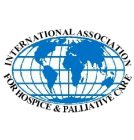Articles of the Month
Assisted Suicide and Euthanasia Should Not Be Practiced in Palliative Care Units
Pereira J et al. Journal of Palliative Medicine 2008 (November 8); Volume 11: 1074-1076.
The first reaction on reading this title was “Of course not!” You then read the paper – a short, well-written one – and the reason for the title becomes obvious and your amazement and horror palpable.
Briefly, some major teaching hospitals in Switzerland, each with palliative care units now permit (or will shortly do so) physician assisted suicide – PAS. Euthanasia remains illegal in that country. Should hospital staff, including palliative care staff, not wish to be involved with PAS the hospital authorities reserve the right to call in outsiders, for example members of right-to-die societies, to assist the patient. It is not stated but presumably that includes prescribing or taking in the fatal medication.
The paper, using many of the arguments known to readers, lists why PAS should not be performed in the palliative care units of these hospitals, even though it will be available “ under exceptional circumstances” in the rest of the hospital. As the authors point out, cogent reasons include:
- “Intentionally hastening death is contrary to palliative care philosophy
- Sends mixed message to a public that is already poorly informed about palliative care
- Source of distress of some patients and families
- Source of tension and conflict between palliative care staff
- Source of personal distress to some staff members
- Places palliative care teams in the position of gatekeepers
- Dynamics of care altered once decision is made to proceed with PAS
- Palliative Care Units may become “ dumping sites” for assisted suicide (or euthanasia)
- Negative repercussions of a Policy that excludes PAS or Euthanasia in Palliative Care Units”
I was reminded yet again how little the general public, and indeed many professional colleagues and, so far as I can see, most politicians, know and understand about palliative care. Surely addressing this problem should be almost as high a priority for all of us in palliative care as is setting up new services. What we cannot do is assume that wherever there is a palliative care unit / team the meaning and the benefits of palliative care will be obvious to all. I have no doubt our colleagues in these Swiss units have demonstrated all that is good in palliative care and pleaded for the adoption of palliative care principles as eloquently as any of us have ever done yet PAS has been introduced (and not even by the back door!) making it easier, almost inevitable, that euthanasia will follow. It is, in my view, tragic that our professional colleagues there have been out on the defensive when they have far better things to do caring for their patients.
Today Switzerland, tomorrow……? Let no-one imagine that the rest of us will be immune. There are many other countries where, as we have been warned for years, PAS may soon be introduced, palliative care provisions weakened and threatened, and the way opened for euthanasia. Call me a cynic but I see us living in the “age of disposables”, an age when expediency is sometimes dressed as compassion, an age when “respect for human rights” can be used to justify almost anything.
Please read this paper.
Derek Doyle, OBE, MD, FRCSE, FRCPE, FRCGP
(Scotland)
Article Summary
Family meetings in palliative care:
multidisciplinary clinical practice guidelines
Hudson P, Quinn K, O'Hanlon B, Aranda S.. BMC Palliative Care 2008; 7:12. http://www.biomedcentral.com/1472-684X/7/12
Effective communication is essential to quality palliative care. One method of facilitating communication is a family meeting. However despite the promotion of family meetings as an essential tool for information sharing and goal clarification in specialist palliative care settings, there has been a paucity of published work examining when such meetings should be initiated, who should attend them, and how they should be conducted. Moreover, many health professionals feel inadequately trained to conduct family meetings.
The team who developed these guidelines should therefore be commended for producing such a comprehensive approach which incorporates: principles for conducting family meetings; pre- meeting procedures such as liaising with the family and prioritising issues; procedure for conducting the meeting and strategies for follow up. Importantly the guidelines were developed from a robust multi faceted evidence base and have recently undergone further clinical evaluation ( see Hudson, PL et al. Family meetings in palliative care: are they effective? Palliative Medicine, In Press). We encourage organizations to consider utilising these guidelines in their clinical settings.
Peter Hudson is an author of this paper and provided the summary.
Email this page to a friend!
Top of Page |

